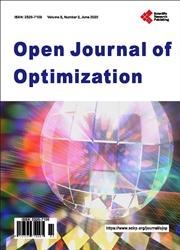Optimal Classifier for Fraud Detection in Telecommunication Industry
引用次数: 1
Abstract
Fraud is a major challenge facing telecommunication industry. A huge amount of revenues are lost to these fraudsters who have developed different techniques and strategies to defraud the service providers. For any service provider to remain in the industry, the expected loss from the activities of these fraudsters should be highly minimized if not eliminated completely. But due to the nature of huge data and millions of subscribers involved, it becomes very difficult to detect this group of people. For this purpose, there is a need for optimal classifier and predictive probability model that can capture both the present and past history of the subscribers and classify them accordingly. In this paper, we have developed some predictive models and an optimal classifier. We simulated a sample of eighty (80) subscribers: their number of calls and the duration of the calls and categorized it into four sub-samples with sample size of twenty (20) each. We obtained the prior and posterior probabilities of the groups. We group these posterior probability distributions into two sample multivariate data with two variates each. We develop linear classifier that discriminates between the genuine subscribers and fraudulent subscribers. The optimal classifier (βA+B) has a posterior probability of 0.7368, and we classify the subscribers based on this optimal point. This paper focused on domestic subscribers and the parameters of interest were the number of calls per hour and the duration of the calls.电信行业欺诈检测的最优分类器
欺诈是电信行业面临的一大挑战。这些骗子开发了不同的技术和策略来诈骗服务提供商,因此损失了大量收入。对于任何留在该行业的服务提供商来说,如果不能完全消除这些欺诈者的活动所造成的预期损失,则应尽量减少。但由于庞大数据的性质和数百万用户的参与,检测这群人变得非常困难。为此,需要一种最优分类器和预测概率模型,该模型可以捕获订户的当前和过去历史,并相应地对其进行分类。在本文中,我们开发了一些预测模型和一个最优分类器。我们模拟了八十(80)个用户的样本:他们的呼叫次数和呼叫持续时间,并将其分为四个子样本,每个样本大小为二十(20)。我们得到了群的先验概率和后验概率。我们将这些后验概率分布分组为两个样本的多变量数据,每个数据有两个变量。我们开发了一个线性分类器,用于区分真实订阅者和欺诈订阅者。最优分类器(βA+B)的后验概率为0.7368,我们基于该最优点对用户进行分类。本文关注的是国内用户,感兴趣的参数是每小时通话次数和通话持续时间。
本文章由计算机程序翻译,如有差异,请以英文原文为准。
求助全文
约1分钟内获得全文
求助全文

 求助内容:
求助内容: 应助结果提醒方式:
应助结果提醒方式:


